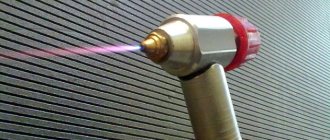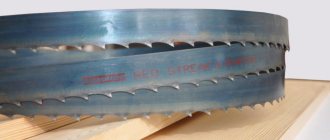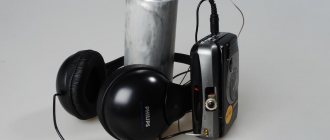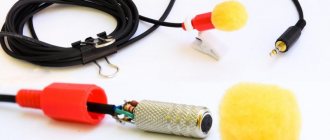Spring has arrived, and with it the time for barbecue. But what do you need to cook a delicious meal in the fresh air?! Of course products! But you can’t do without fuel for a fire, because the aromatic smell of smoke is 50% of success. You can take fruit firewood or any other wood left over from last season. But it is best to use charcoal. Its consumption is low and the heat is stable. Nowadays a huge amount of such raw materials is sold, but we are thrifty owners, aren’t we?! Therefore, I decided to write about how to make charcoal with your own hands at home.
Production technology
Coal from wood is consumed in large volumes by metallurgical enterprises, where it is used to produce high-purity alloys, as well as to saturate the metal with carbon, resulting in an increase in its physical properties.
In the chemical industry, this product is used in the manufacture of glass, various plastics and even paints. Coal has not bypassed the food industry; in food products it often acts as a natural coloring agent, which is displayed on their packaging under the code E153.
Such significant demand requires corresponding production volumes, so charcoal stoves are usually located near or on the territory of wood processing enterprises. This is understandable, because there is a large amount of large waste wood of various species there, which serves as raw material for charcoaling.
To explain in simple words, the charcoal production technology is designed to solve the problem of obtaining carbon from wood to the highest possible degree of purity. To do this, all other organic and inorganic substances must be removed, which is achieved using a pyrolysis reaction. Its essence lies in the separation of all unnecessary compounds from raw materials by thermal decomposition in the presence of insufficient oxygen. But let's go in order.
There are four stages of the production process in total (not counting the preliminary preparation of raw materials):
- drying at temperatures up to 150 ºС. The pyrolysis process, which takes place at higher temperatures, requires a minimum amount of moisture in the raw material;
- pyrolysis, which takes place at a temperature of 150-350 ºС and a lack of oxygen. Thermal decomposition of substances occurs and coal begins to form. Pyrolysis gases are released;
- combustion (calcination) when heated to 500-550 ºС. At this stage, tars and residues of substances are released from the coal in the form of gases;
- recovery (cooling).
In essence, a coal production plant is a furnace where all the above reactions take place. The figure below shows a diagram of the technological process:
Scope of application
Charcoal is used in industry for the following purposes:
- for use as part of filters;
- for melting crystalline silicon;
- for use in metallurgy (saturation of steel with carbon, production of pure alloys);
- for the production of glass, some types of plastics, paints;
- for the production of natural dye for the food industry;
- for the production of activated carbon;
- for use in agriculture;
- for use as a convenient household fuel for stoves, fireplaces, barbecues.
When burned in stoves and fireplaces, this type of fuel burns with virtually no flames, providing even and intense heat. The most highly valued product is grade A, which is made from hardwood.
Important! If charcoal is used indoors (for heating or cooking), it is recommended to light it without using chemical kindling agents. This will avoid the appearance of an unpleasant odor and harmful substances falling into the food. In this case, coals are ignited using paper and dry splinters.
Charcoal stove
The charcoal oven is quite complex, and it is very difficult to replicate its design at home. The cylindrical or rectangular body has a combustion chamber, on top of which 2 closed containers filled with raw materials are loaded - retorts. The wood is heated from the outside, through the walls of the retort, and uses the heat generated by the wood during the reaction process. The operation of the furnace in various modes is shown in the diagram:
An industrial furnace for the production of charcoal is designed in such a way that while pyrolysis is taking place in one container, drying is taking place in the second, the pyrolysis gases are burned and pass through a retort with wet raw materials. This sequence is followed further until the final product is obtained. It turns out that the internal volume of each vessel is divided into zones, in each of which a certain process occurs:
After calcination, the containers with coal are unloaded and new ones are placed in the oven. Before packaging and sending to the warehouse, the product undergoes crushing to the required fraction size, and, if necessary, briquetting. The apparatus where all operations are carried out using this technology is a continuous charcoal furnace. However, there is another technology, but it is more complex and expensive, although it provides high performance.
Preparation of material
Not every piece of wood can use charcoal for cooking. These are fruit trees (pear, apple, cherry), deciduous trees (alder, oak, maple) and the common birch. Coniferous species are not suitable at all. Such raw materials contain resins (this will ruin the taste of the meat).
Construction scraps are not used to make coal for barbecues: impregnations and adhesives will leave carcinogenic substances in the coal during combustion.
Birch is not the best option, but it is a common tree. The coal turns out a little hotter than necessary. Although, knowing this feature, you can adapt and make great barbecue.
The second requirement is dry firewood. Moisture is harmful for pyrolysis. In industrial production, raw materials are dried in special ovens with gases up to 150 ° C, and when burning “for yourself” you need to either let the wood dry or use drying material.
Rotten wood cannot be burned into charcoal.
The bark degrades the quality of the coal and, if possible, should be removed from the firewood.
Making charcoal at home
Information about home charcoaling is of interest to those people who are involved in metal forging in small workshops. Clean biofuel such as charcoal has long been considered the best for the forge. Well, everyone has long known how good charcoal is for kebabs and barbecues, but buying it in a store is a little expensive. Based on the fact that equipment for the production of charcoal is complex, expensive and cumbersome, we will offer two methods that have long been proven by home craftsmen:
- burning coal in a barrel;
- charcoaling in a pit.
The method of producing coal in a barrel, as in a pit, involves the same technological process of pyrolysis in a confined space with a lack of oxygen. Only under such conditions the product is not so pure for obvious reasons. The skill of the performer also plays a big role; the first 2-3 portions can simply burn out (which happens more often) or, conversely, not burn out. But everything comes with experience.
The method of charcoaling in a barrel is considered more convenient and technologically advanced. So, to make charcoal yourself, you actually need a metal barrel with a capacity of 200 liters, and even an old vacuum cleaner. Any other cylindrical metal container will do, preferably with thick walls; it will last longer. A hole is drilled at the very bottom of the container and a fitting is inserted. A hose from a vacuum cleaner is connected to it; this will supply primary air to the combustion zone.
It is important to find an airtight lid for the barrel. If there is none, you need to adapt a sheet of metal, asbestos cement or other material for this purpose. You will also need a long steel poker for scooping firewood. Regarding the latter, it is worth noting one important point. Since charcoal is made at home using improvised means, the technology is not always followed, but it is necessary to withstand the low humidity of the firewood.
Important! Freshly cut wood or wood saturated with moisture is not suitable for charcoaling; there will be a lot of smoke, and the pyrolysis process will not begin or will proceed very sluggishly. As a result, you will end up with ash or unburned firewood. The wood must be dry.
The bark is removed from the tree (it smokes a lot, and produces very little coal) and sawed into logs up to 40 cm long, so that they are tightly placed in a barrel. Then light a small fire at its bottom and turn on the vacuum cleaner, otherwise the fire will start to smoke heavily.
As the firewood flares up, you need to add another portion. It should be noted that the production of charcoal in this way is a delicate process; here you need to correctly catch the moment when the raw material has flared up well, but not let it burn to ash, but add new wood. If necessary, you can turn off the vacuum cleaner for a while, and when loading more than half of the container, it is better to insert the air supply pipe from above.
When the barrel is full, it is covered with a lid, the vacuum cleaner is turned off, and the fitting is closed with a plug. Now you need to wait until the processes inside the closed vessel are completed; you can open the lid only after the walls of the container have completely cooled. The convenience of the barrel is that you can simply turn it over and calmly sort the resulting product. Some of the wood will remain unburnt, but it doesn’t matter, it will go to the next load. The rest of the coal is sifted and put into bags.
Product labeling
The difference in approaches is explained by the high content of resin-like substances in coniferous raw materials, which, if the pyrolysis reactor is sealed, will complicate the implementation of the technology.
From the pyrolysis products of the first group, coal is obtained, marked with the letter A, with a maximum carbon concentration reaching 90% and a minimum content of mineral components (2.5%).
If a mixture of raw materials from the first two groups was subjected to pyrolysis, then the maximum carbon content in charcoal labeled B reaches 88% with the same ash content.
If a mixture of all rocks is subjected to charcoalization, a coal conglomerate is formed, marked with the letter B. The concentration of skeletal carbon in it reaches a maximum of 77%, mineral components - 4%, many other parameters are not standardized.
Note! Products of grade A have the best characteristics, therefore they are used for subsequent activation to obtain sorbents.
Coal of group B demonstrates good qualities; it and products of grade A are used in industrial organic synthesis.
The result of implementing charcoal technology has acceptable properties to meet the needs of most consumers if the process is carried out correctly. There are many people who want to prepare a valuable product from wood. There are far fewer people willing to delve into the specifics of implementing an idea in practice, which can lead to unpleasant consequences with unpredictable outcomes.
Charcoaling in a pit
You can make charcoal yourself at home or right in the forest simply in a hole. To get 2 bags of coal, you need to dig a round hole approximately 80 cm in diameter and half a meter deep.
The bottom is trampled down with feet, and the walls are cleaned so that the fuel does not mix with the ground. The latter does not need to be thrown far, it will come in handy in the end. The difference with “barrel” burning is only in the absence of forced pressurization with a vacuum cleaner. Dry firewood is taken, 30 cm long and no more than 7 cm in diameter, and a small fire is built from it at the bottom of the pit.
Further actions - as in the case of a barrel, raw materials are added as needed. A pit full of firewood is covered with leaves or grass, then covered with earth and compacted. You can come back for coal in 2 days, by which time it will definitely have cooled down.
Main advantages
Charcoal is produced by pyrolysis, the raw material for which is wood. During pyrolysis, wood is heated to high temperatures in an oxygen-free environment. The finished product is delivered to factories and store shelves for mass consumption. It is sold in packaged form and is used in everyday life to replace firewood when cooking on the grill or as fuel for a bio-fireplace.
We buy ready-made charcoal in the store
Product benefits include
:
- absence of harmful substances (sulfur, phosphorus) in its composition;
- almost complete absence of emissions into the atmosphere: this is why fuel can be used in decorative fireplaces without a chimney;
- complete combustion: no large amount of ash is formed;
- high calorific value;
- renewability: plant materials are renewable in nature.
How to make coal in a barrel: technology, arguments for and against
To prepare coal in a barrel, preparatory work is also carried out. To begin, the logs should be cleared of bark and cut into bars of the same size. Instead of a pit, take a container made of durable metal. Dimensions are selected individually, based on the volume of coal produced.
To prepare charcoal in a barrel, bricks made of heat-resistant material are placed at the bottom of the container, edges up. Then a fire is lit between the bricks using paper, wood chips, branches or twigs. Prepared logs are laid on top until the resulting coals cover the bottom of the container so that the bricks are not visible. A grate is placed on the burnt firewood, and the next batch of wood raw materials is placed on top of it. The beams should be laid close to each other.
When the container is filled to the brim, it is covered with a metal sheet. You can judge the readiness by the smoke coming out from under the lid: if it has acquired a bluish tint, it means the coal is ready. At the end of the process, cover the container tightly and leave until the coals cool completely.
There is another cooking method. In this case, the fire is lit not inside the barrel, but under it. It is necessary to build a kind of platform out of bricks, laying a sheet of steel or other non-combustible material on them. A fire is built between the bricks, and a container filled with firewood is placed on top.
The barrel should not be filled with raw materials very tightly, so that there are gaps for gases to escape when the wood oxidizes. After gas evolution has ended, the container should be kept on the fire for some time and then removed, tightly closing the lid. The resulting coal is cooled gradually and then checked for quality.
The advantages of the technology for producing coal using this method include the high quality of the finished product - such coal is suitable for lighting a fireplace and for frying kebabs. The downside is the labor intensity and complexity of the process.
When filling with coolant
There are only two known situations that require this technological operation:
- putting heating into operation (at the beginning of the heating season);
- restart after repair work.
Typically, coolant water is drained in late spring for two reasons:
- Water inevitably becomes contaminated with corrosion products (inside radiators, metal-plastic and polypropylene pipes are not susceptible to it). If you leave old water for the new season, you risk breaking the circulation pump with solid contaminants.
- Flooded systems of country houses that have not been started can “defrost” during a sudden cold snap - such cases are not uncommon. In this sense, antifreeze coolant is preferable. The high-quality composition has high anti-corrosion properties, increasing the drain interval to 5-6 years. There are known cases of uninterrupted heating operation with the same volume of antifreeze for 15-17 years. It is recommended to drain low-quality antifreeze after 2-3 years.
Where to buy
I understand the technology, how charcoal is made on an industrial scale for barbecue and other purposes, many people think that it will not be possible to repeat the same thing at home.
This is not to say that the process is complex and impossible to implement. But objectively, not everyone will decide to undertake such experiments. And if you just want to cook meat or vegetables on coals, it’s much easier to buy a package of ready-made coal. Then pour it into the grill, light it and start cooking.
When choosing charcoal, you should pay attention to the rating among manufacturers. If we talk about the Russian market, the following brands are most popular here:
- Weber.
- Palisad.
- Grilloff.
- Charco.
- SuperGrill.
- SevZapUgol.
- Every day.
- Coal Peas.
- Great BBQ.
- Forest.
- Image Fast Grill.
There are other brands that are also able to offer decent quality coal.
At the same time, a product such as charcoal has a limited shelf life and storage rules. If they are violated, then you will end up having to cook on dust or raw coals, which will be impossible to light.
Taking these nuances into account, you need to buy not only products from trusted manufacturers, but also choose the right places. This includes specialized stores and Internet sites.
There is also a list of places where it is better not to buy coal:
- cheap minimarkets;
- convenience stores;
- gas stations;
- roadside shops;
- markets.
These are places with an increased risk of buying frankly low-quality coal. It may not flare up, or it may burn quickly and not produce the required heat.
An alternative solution is to make charcoal at home. This way you can prepare a large supply of fuel for later use on grills, barbecues, and so on.











